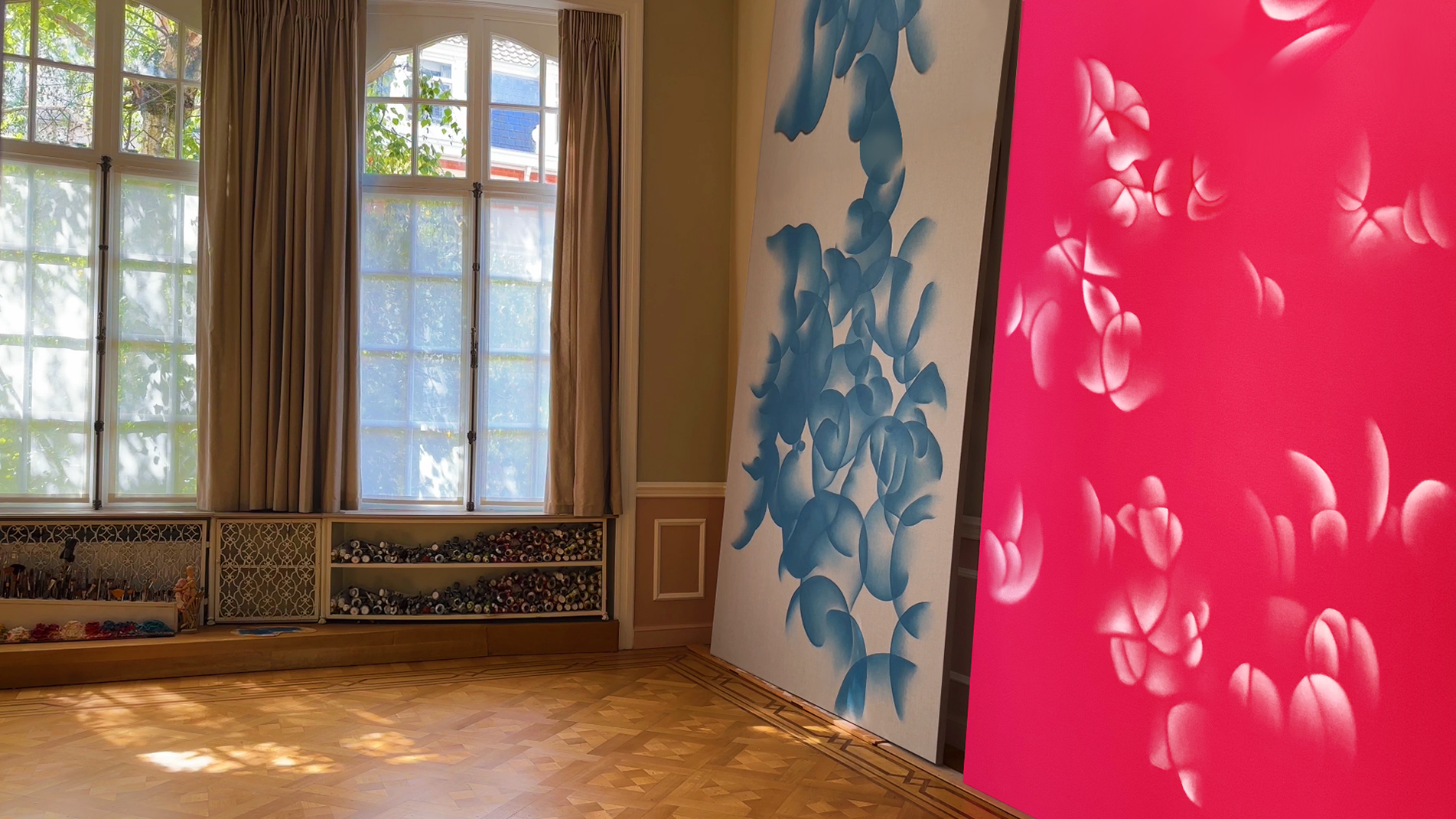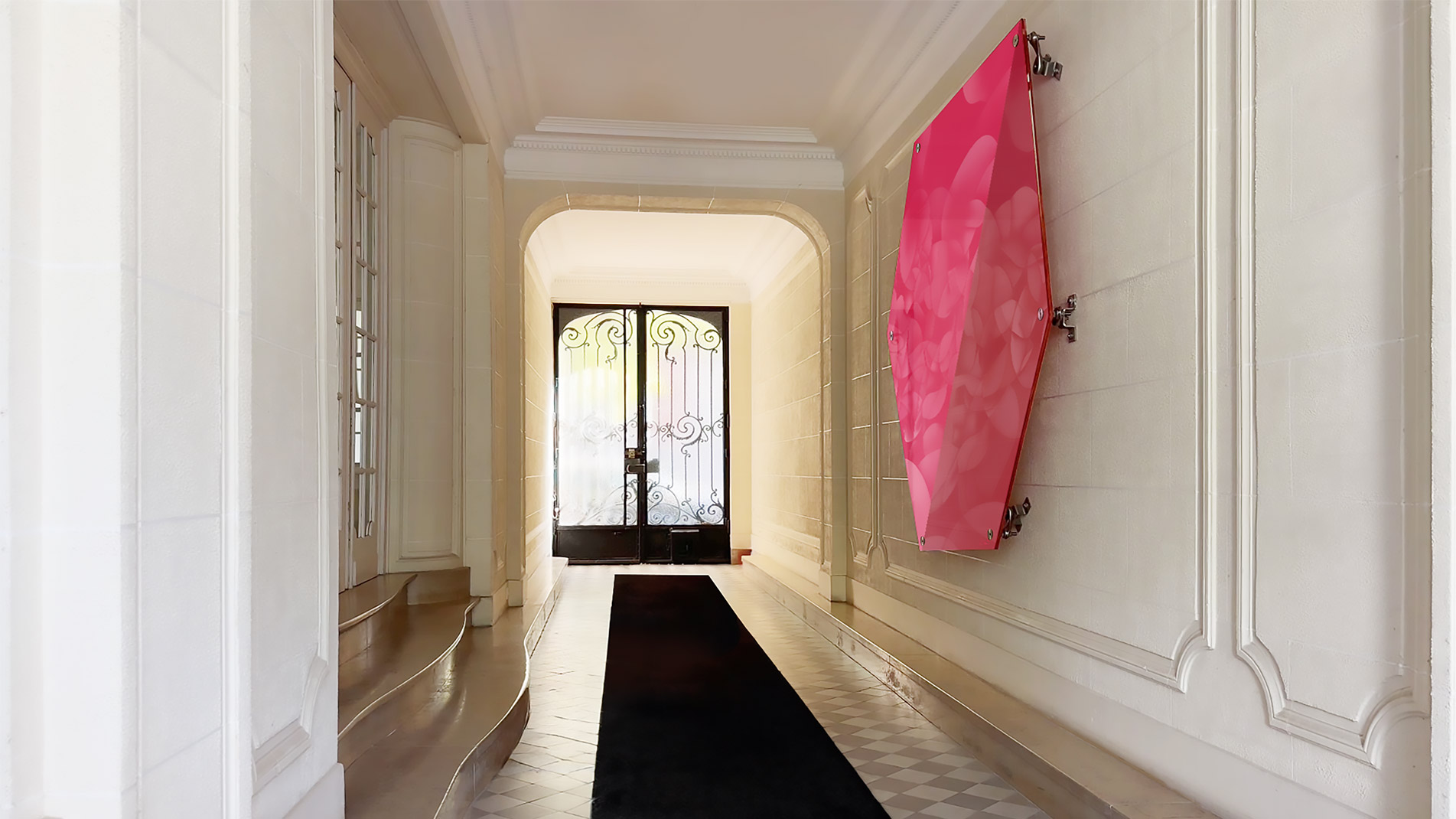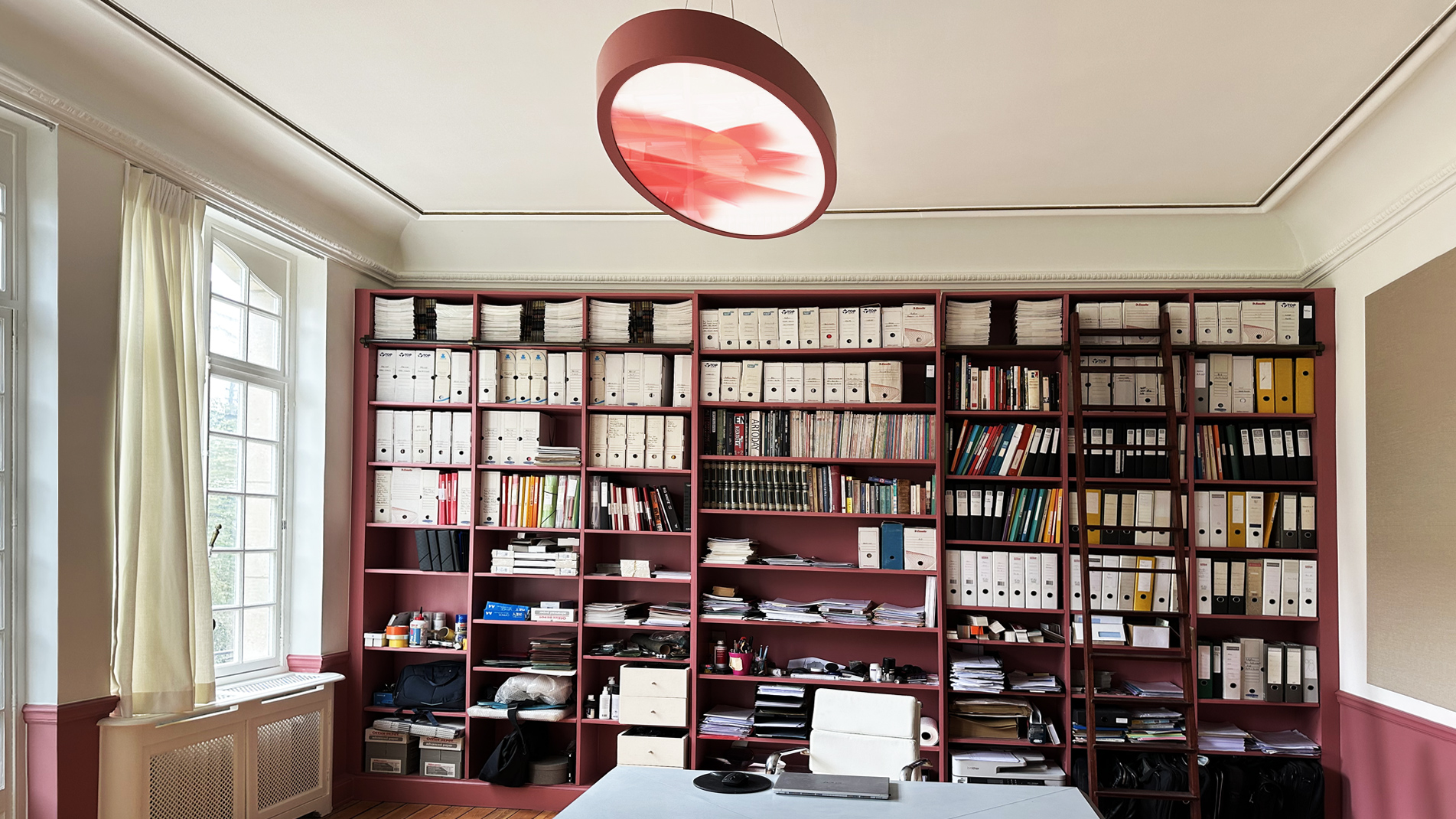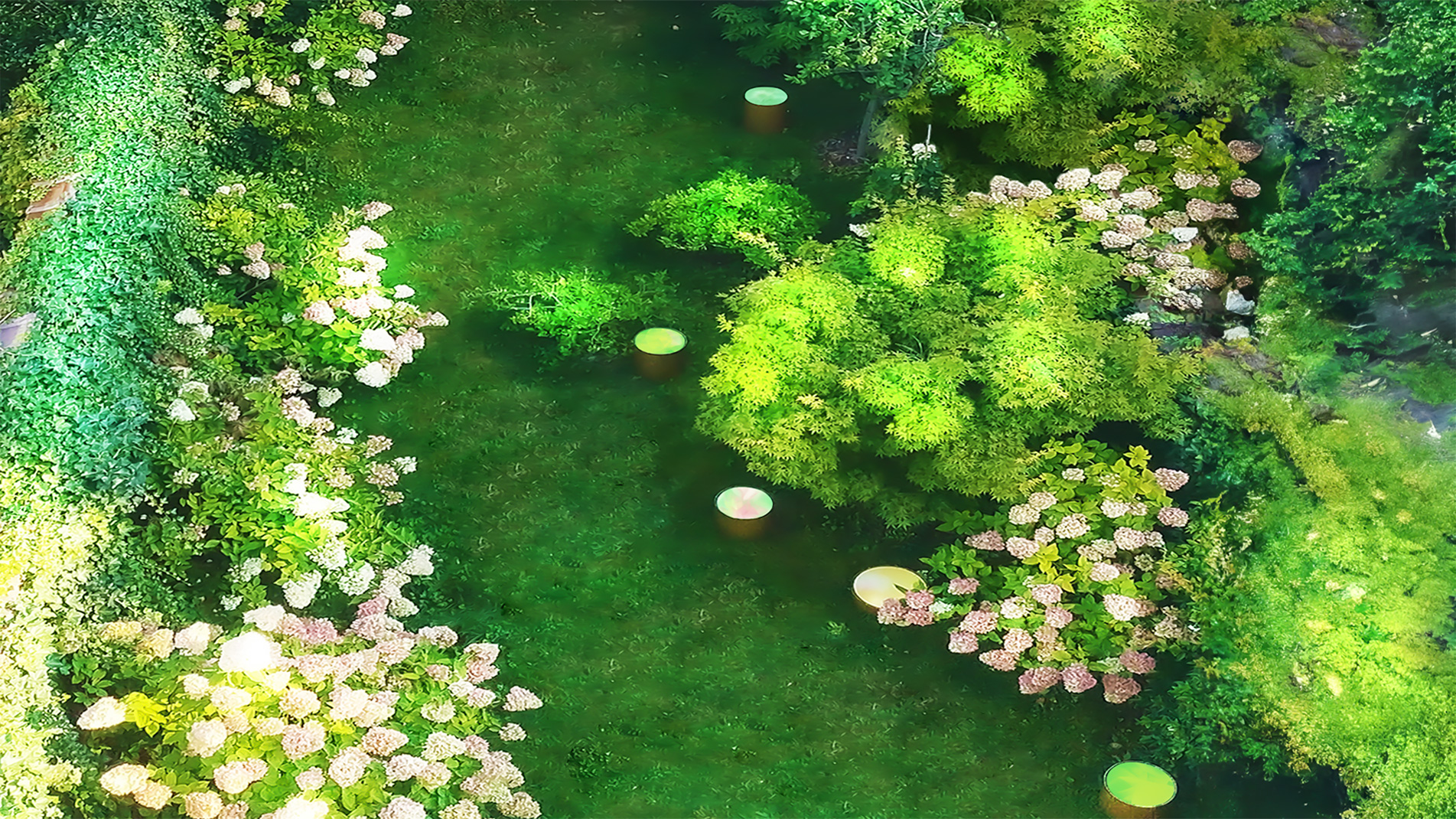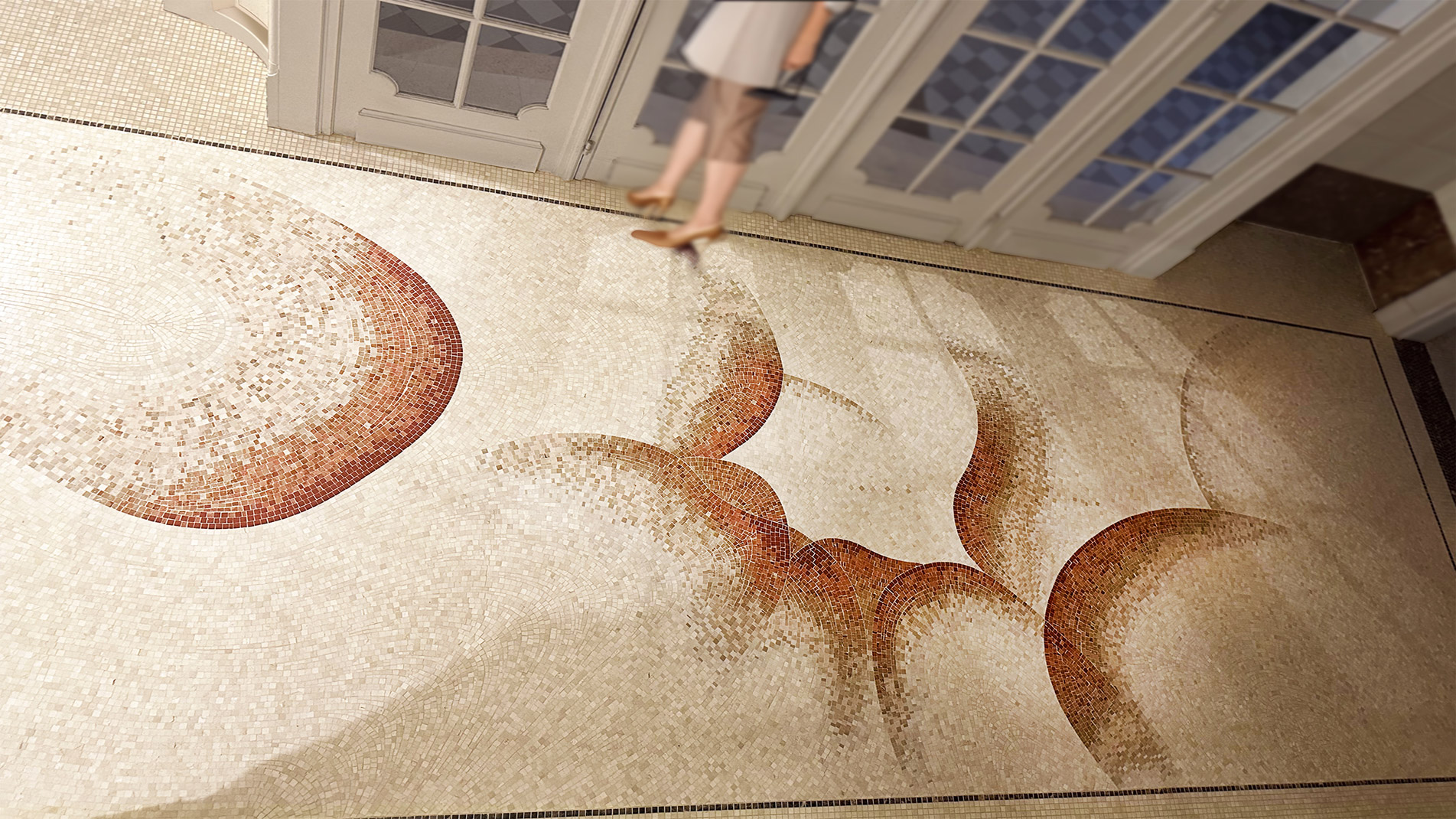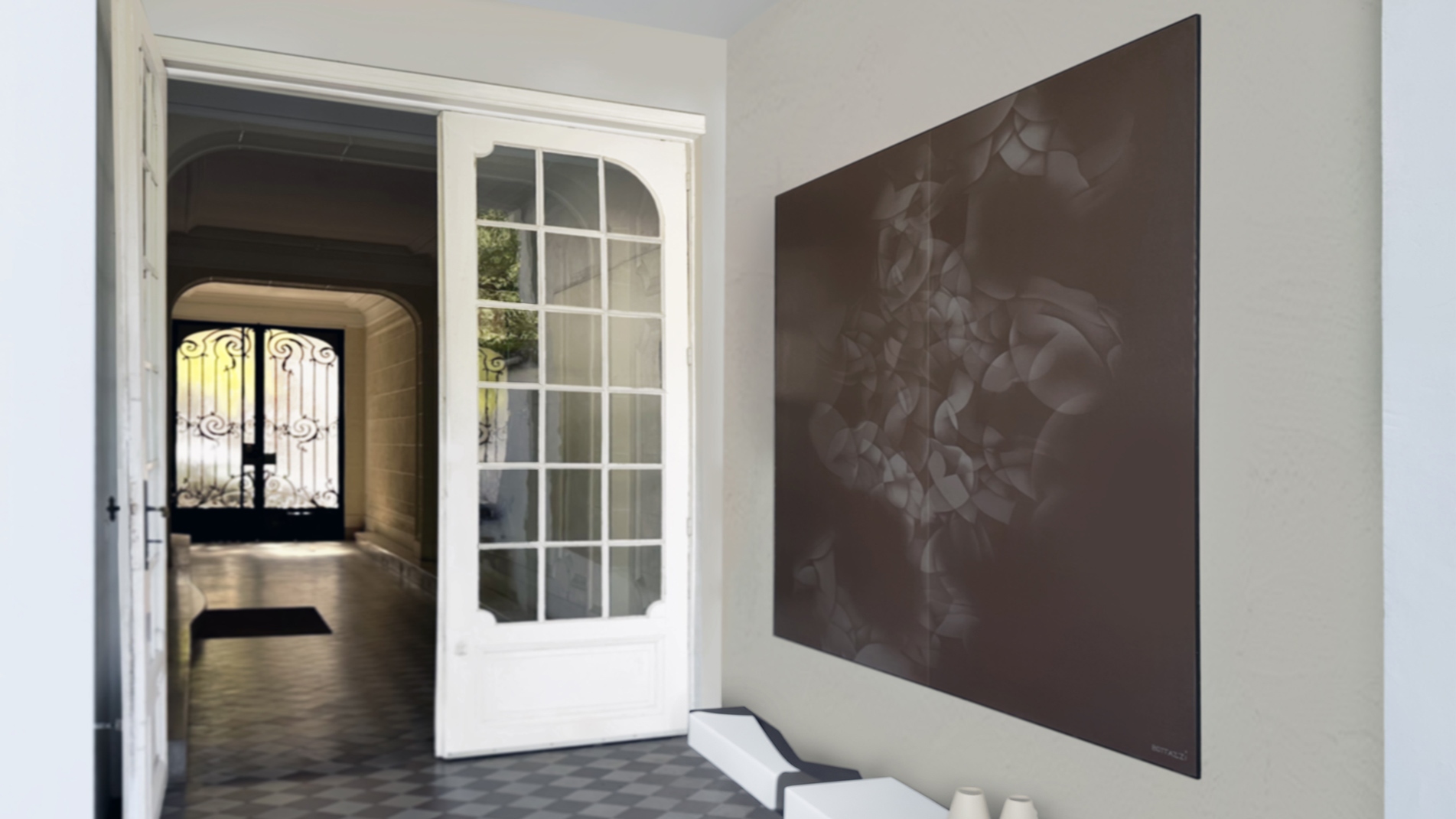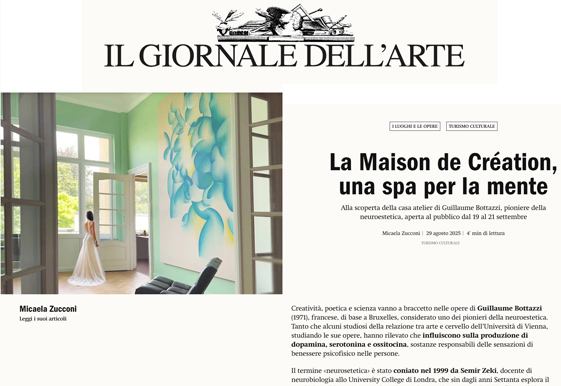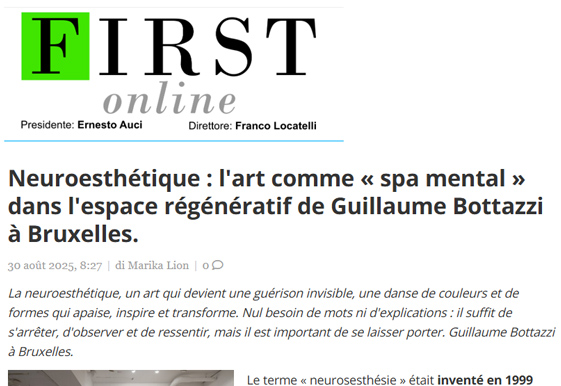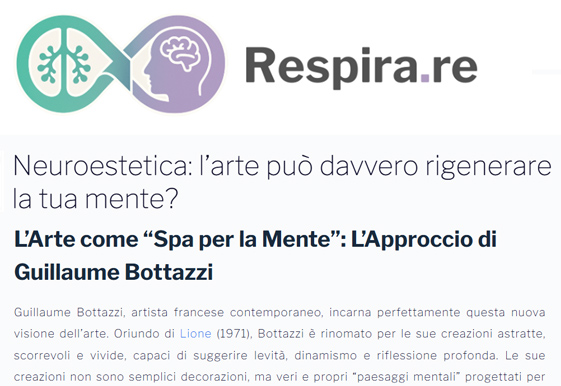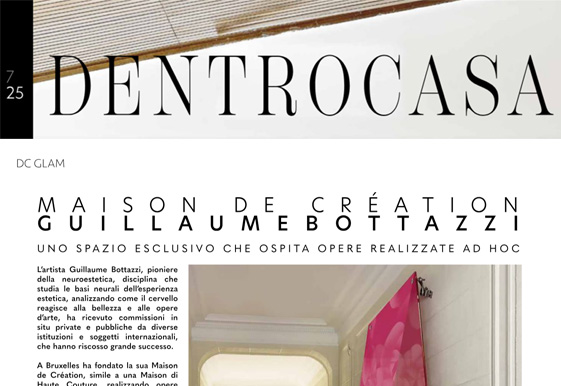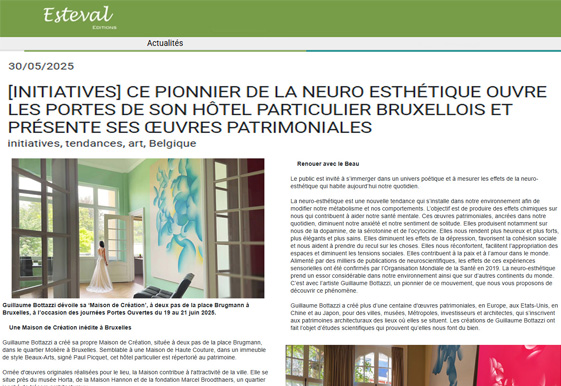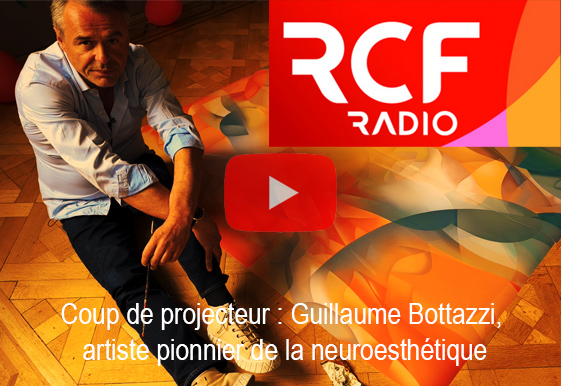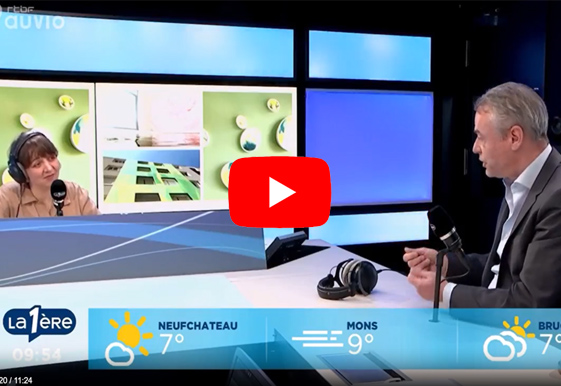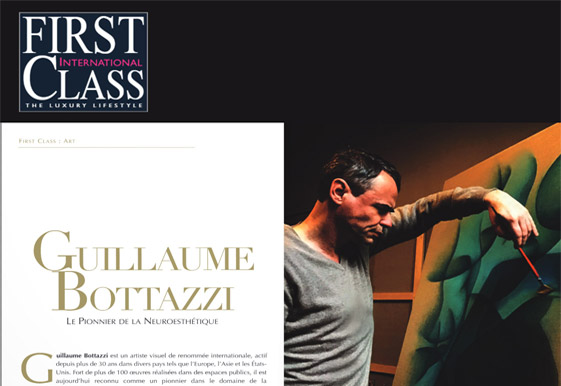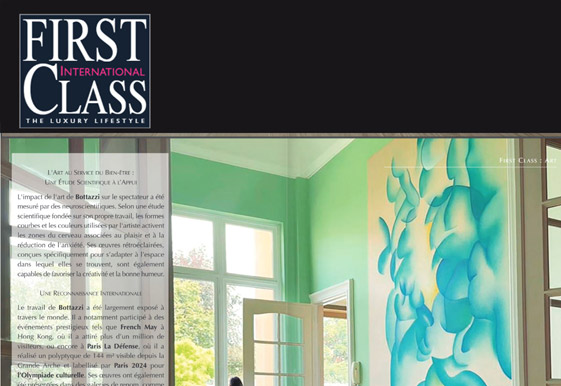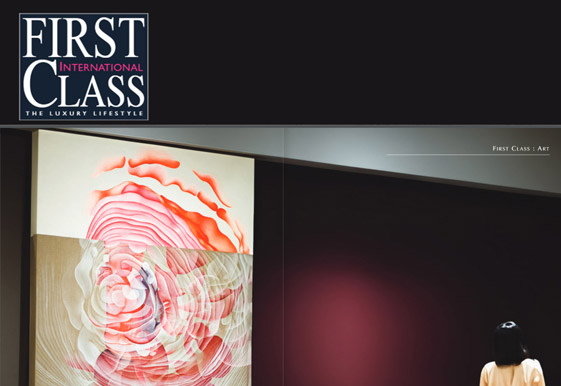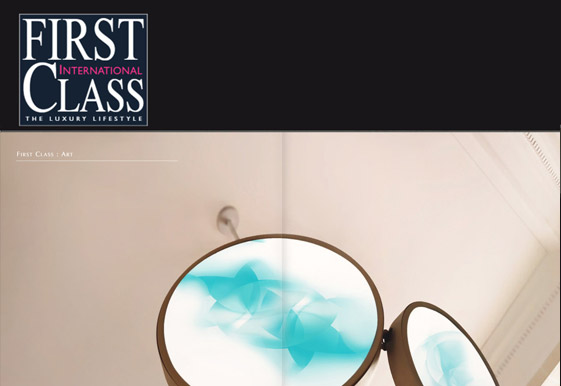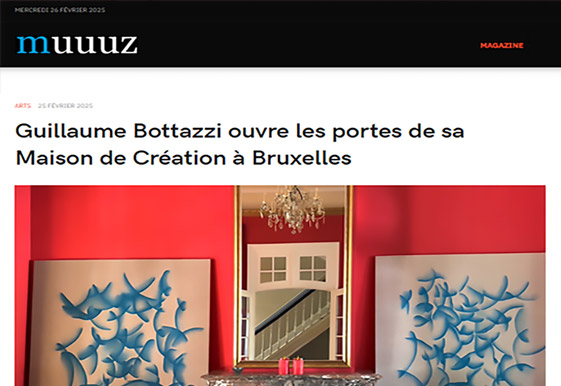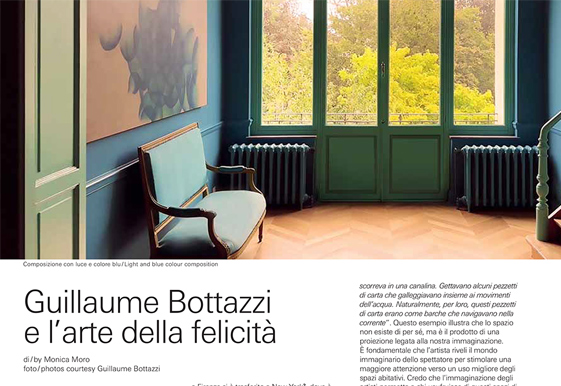House of Creation
Guillaume Bottazzi has set up his own House of Creation, similar to a House of Haute Couture, in a Beaux-Arts-style building designed by Paul Picquet. It is located a stone’s throw from the Place Brugmann in Brussels, at 98 rue Berkendael, in the Molière district. The building is listed as one of the city’s heritage sites. Decorated with original works, it aims to contribute to the city’s attractiveness and forms a triangular shape with the Maison Hannon and the Horta Museum. It’s a neighbourhood of Beaux-Arts, Art Nouveau and Art Deco architecture, an invitation to take a stroll.
“Guillaume Bottazzi is a French visual artist, born in 1971, who has had a permanent studio in Brussels since 2012. For the last 30 years, he has worked predominantly in Europe, Asia, and the United States. Recognised as a pioneer of the neuroaesthetics movement, he has signed more than 180 artworks for public spaces. His most recent installation is a permanent collection designed for a Beaux-Arts-style building listed as a heritage site by the city of Brussels. The new pieces are described by some as having ‘the power to enhance our ability to live better and feel good’.”
darc magazine, April/May 2024
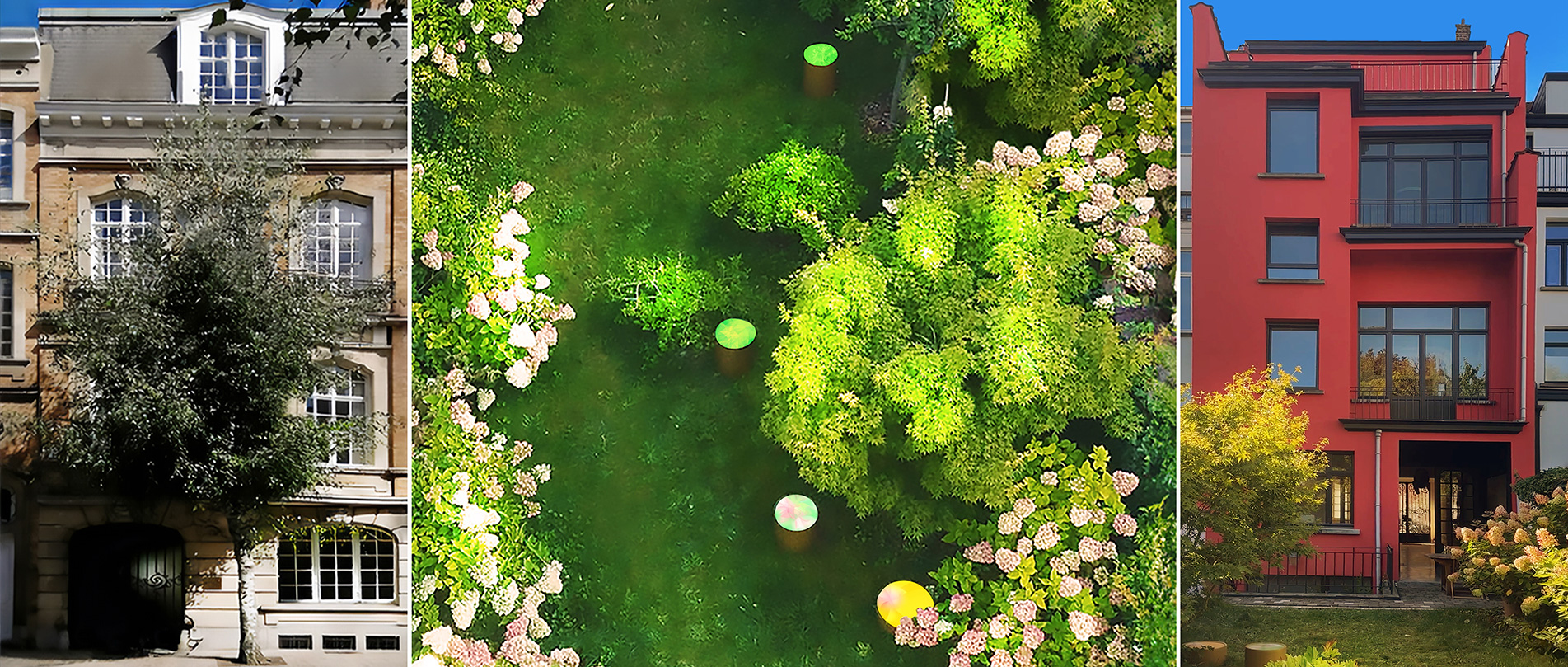
The designer collaborates with teams of fitters, craftsmen, glassmakers, electricians and technicians whose reputation for excellence is second to none. Guillaume Bottazzi has created over a hundred heritage works. His site-specific works have met great success. In particular, they are sold to CAC 40 companies and many renowned architects. They modify our environment and promote our mental well-being. Guillaume Bottazzi is a pioneer in applied neuroaesthetics, an approach that links art, perception and well-being. This is why his works can be found in public spaces, on buildings, in hospitals and museums, as well as in work environments and communal living spaces.

“For the past 30 years, the prolific Guillaume Bottazzi has been travelling the world to disseminate works in situ. A keen espouser of enamel and fabric, he is an ambassador for environmental art.”
Le Monde newspaper, September 2020
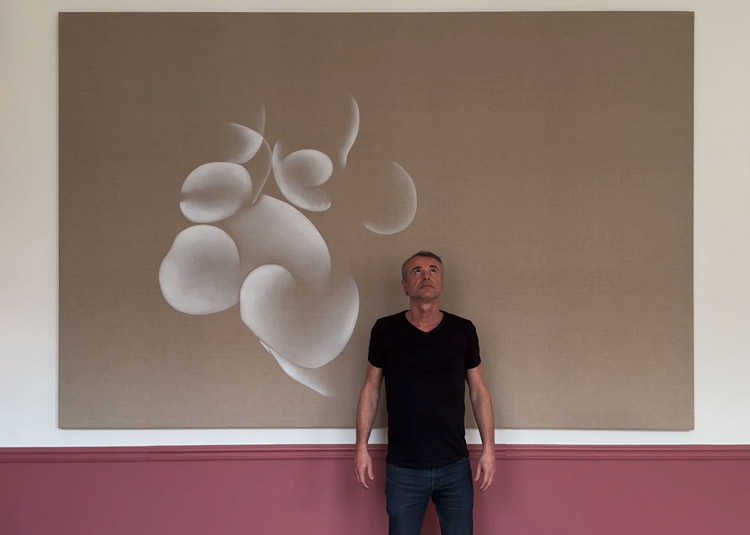
“The works of Guillaume Bottazzi create dreamlike spaces a dreamlike space in which we live. Space does not exist in itself but is a mental construction. These works beyond reality modify our environment and make our dream.”
TL magazine, summer 2021
“Guillaume Bottazzi and the art of happiness. Art undoubtedly has the power to enrich our lives, but according to various research studies, it could also make us happy, as reported in an official statement by the World Health Organisation published in 2019. This is demonstrated by the art of Guillaume Bottazzi, an artist whose environmental, monumental and permanent works are exhibited around the world, and whose dream is to paint with light to bring well-being”
Luce magazine, December / January / February 2025

“Guillaume Bottazzi’s luminous works to replace antidepressants?
Head to a Beaux-Arts-style building listed as a Brussels heritage site, a stone’s throw from the Place Brugmann (98 rue Berkendael, Ixelles). It is in this building that, for three days, the public will be able to discover the latest permanent creations by Guillaume Bottazzi. The artist is well known. With his monumental frescoes scattered all over the world, he has established himself as one of the leading figures in public art. For more than 30 years the man has been collaborating with many renowned architects, sharing his colorful aesthetic on public walls – notably in museums and ministries – but also responding to large-scale private commissions. In 2023, forty of his environmental and permanent works of art, scattered across France, took part in the European Heritage Days.
The sensory power of a work of art
Even though we have known for a while that the arts enrich our lives, they can also play a major role in our mental health. In 2019, the World Health Organization made an official statement to this effect. The most common effect? Reducing stress considerably. For over a decade, Guillaume Bottazzi has been exploring the intimate links between neurology and art in our living spaces, with our well-being as his focus. He is the first to be convinced that certain works of art act like medicine, making us happier. A pioneer in neuro-aesthetics, the artist explains these exceptional benefits in terms of the mistakes we make in our environment, notably by using lights in our daily lives which are said not to allow the pupil eyes to rest, to damage our eyesight, and to produce anxiety and sleep disorders. Although it would certainly take more than one visit – perhaps even a lifetime – to really realize it, these luminous works of art are said to have the power to make us feel better: attentive contemplation is said to reduce our heart rate, stress and anxiety, and to help us put our thoughts in order. For Guillaume Bottazzi, who studies the subject and experiments with it on a daily basis, the benefits are not just conditional. The artist is convinced that his luminous works have got the power to soothe and strengthen us, to put us in a good mood by activating neurotransmitters, dopamine in particular, which send us rewards commonly known as happy hormones. They act against depression by producing serotonin, a substance that activates neurotransmitters found in antidepressants.
About his luminous works, which he sees as therapeutic, the artist says: ‘I’ve long been dreaming of painting with light, and the sensory power of my poetic works has the power to make people dream and feel good. The material used is enamel, also used to make jewellery or stained glass, a natural material reduced to powder and composed of different minerals. The atypical shapes, with designed bases, create slopes where the elements of the piece are reflected’.
The only thing we can be sure of is that the volumes, colors and subtle modulations of these light boxes lead us almost instantly to a state of calm… But for how long?”
La Libre Belgique newspaper, January 2023
“Approached by two Austrian neuroscientists several years ago, they demonstrated the influence of Guillaume Bottazzi’s work on reducing anxiety and increasing dopamine levels.”
Juliette & Victor magazine, winter 2022 – 2023
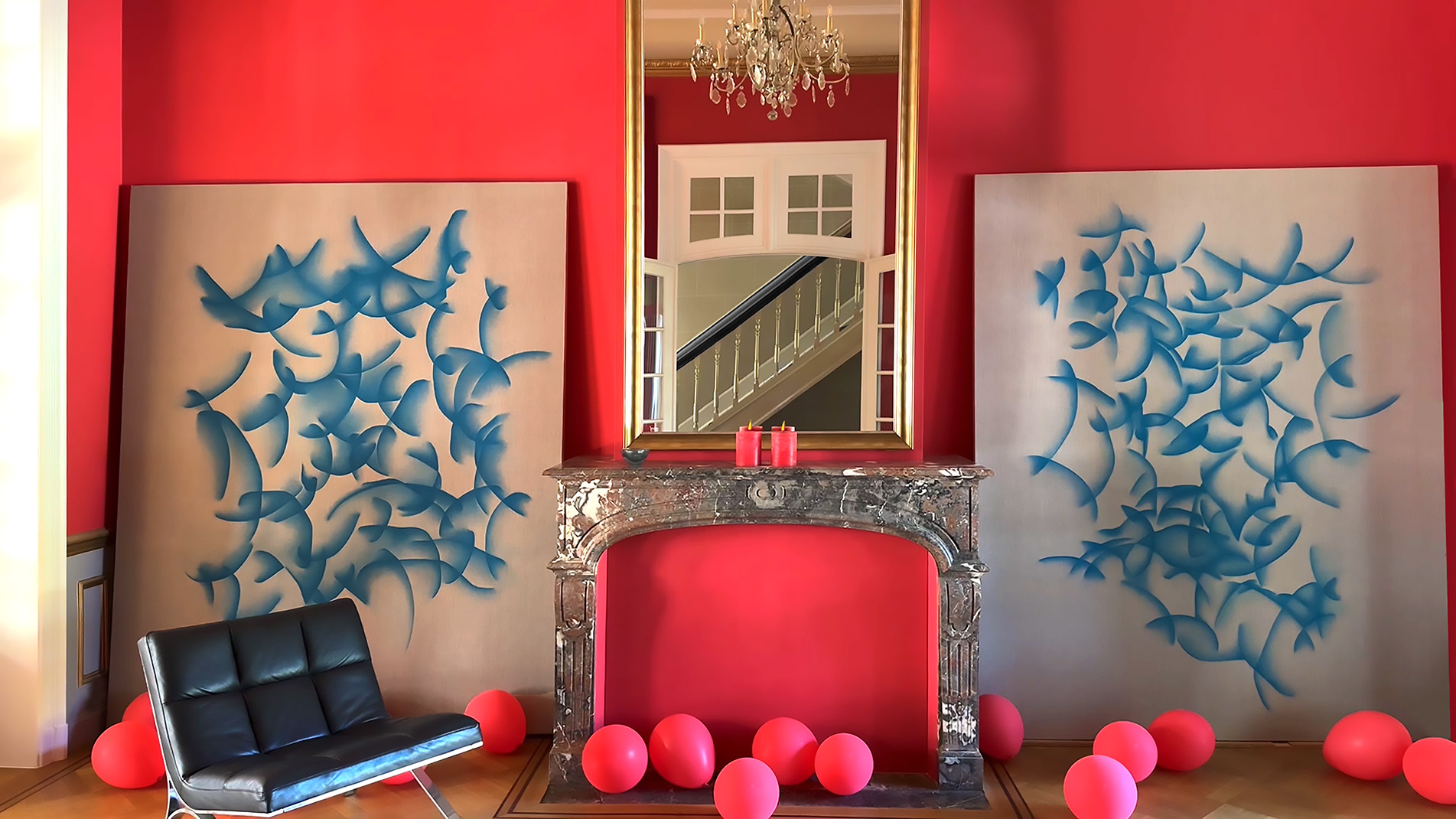
“Guillaume Bottazzi’s poetic creations invite us to experience a richer life, to strengthen our essence, to build our evolution in their company, within a magical universe. […] They give birth to poetic and enchanting spaces, whose metamorphosis follows the whims of our imagination.”
Muuuz magazine, September 2023
“This pioneer of neuro-aesthetics strives […] to create luminous works of art designed, by modifying our brains, to make those who look at them happy. Guillaume Bottazzi, who has already exhibited at sites and museums all over the world, including some forty French cities, recently installed his latest permanent creations in a listed Brussels building.”
Soir Mag magazine, April 2024
France 24, March 2024 - TV sciences news - A neural pathway to happiness
“Guillaume Bottazzi is a French visual artist, born in 1971, who has had a permanent studio in Brussels since 2012. For the last 30 years, he has worked predominantly in Europe, Asia, and the United States. Recognised as a pioneer of the neuroaesthetics movement, he has signed more than a hundred artworks for public spaces. His most recent installation is a permanent collection designed for a Beaux-Arts-style building listed as a heritage site by the city of Brussels. The new pieces are described by some as having “the power to enhance our ability to live better and feel good. These luminous works of art in situ reduce our heart rate, stress, and anxiety, and help us to put our thoughts in order. They have the power to soothe and strengthen us, to put us in a good mood by activating neurotransmitters such as dopamine, which send us rewards commonly known as the ‘happy hormone’. They help to make the viewer happier, more elegant, and stronger”.
In 2019, WHO (World Health Organisation) confirmed that art can improve mental health. Ten years of research into art and the brain by neuroscientists Helmut Leder and Marcos Nadal from the University of Vienna in Austria, has shown that the works realized by Bottazzi help us to feel better and be happier. His works modify our organism, and the involvement of these sensory experiences has a powerful effect that impacts our biology, the way we live, feel, and hear the world around us. […] “I’ve been an artist for over 30 years, and I’ve been dreaming of painting with light for 15 years. My dreamlike aspiration sees the magic in this material.” For more than a decade, these lighting systems have been providing complete, integrated solutions. These in-situ creations adapt not only to the spaces in which they are installed, but also to the needs of the users. This unifying approach reconciles art, design and architecture, an alliance lost since the beginning of the last century. […] According to Nobel prize winner for medicine Eric Kandel, these luminous creations immerse the viewer in an unreal universe that encourages us to distance ourselves more from the things that surround us and encourages our creativity. And, according to Leder, they reduce our anxiety and strengthen our capacity to live.”
darc magazine, April/May 2024
“With one in five of us reportedly affected by mental-health issues, anything that helps to make us happier is a huge plus. If that thing is also aesthetically pleasing, all the better. With the World Health Organization confirming that art can improve human health, French painter Guillaume Bottazzi has devoted much of his work to this realm.”
INTERIOR DESIGN magazine, August 2024
“‘Urban art has fun with the city, questioning it, embellishing it, energising it, dressing it up […] and allowing us to resonate with it. It reveals its soul or gives it one, and establishes its identity. In terms of health, it’s a real medicine, both for the mind and for the body,’ explains Guillaume Bottazzi, a visual artist based in Brussels who has just completed his latest permanent creations, designed for a Beaux-Arts-style building listed as part of the city’s heritage, a stone’s throw from the Place Brugmann.”
marie claire magazine, June 2024
This film is a performance. Guillaume Bottazzi creates his painting live, from the first touches on the canvas to the finished picture.
“[..] curved contours could be preferred because they seem less harmful, or plain and simply because they are inherently attractive . The idea that curvature is an aesthetic primitive confirms philosophers’ claims since the 18th century. Burke, for instance, believed that beauty is smooth, without edges or sharp angles. In this respect, Guillaume Bottazzi’s work exemplifies the use of these basic features, which elicit pleasure automatically, probably unconsciously, and are attractive to the eye. Like many artists, he intuitively applies these principles and produces visual doses of sensory pleasure.”
Helmut Leder and Marcos Nadal, Faculty of Psychology of the University of Vienna – Text extracted from the study “Curved art in the real world: A psychological look at the art of Guillaume Bottazzi”
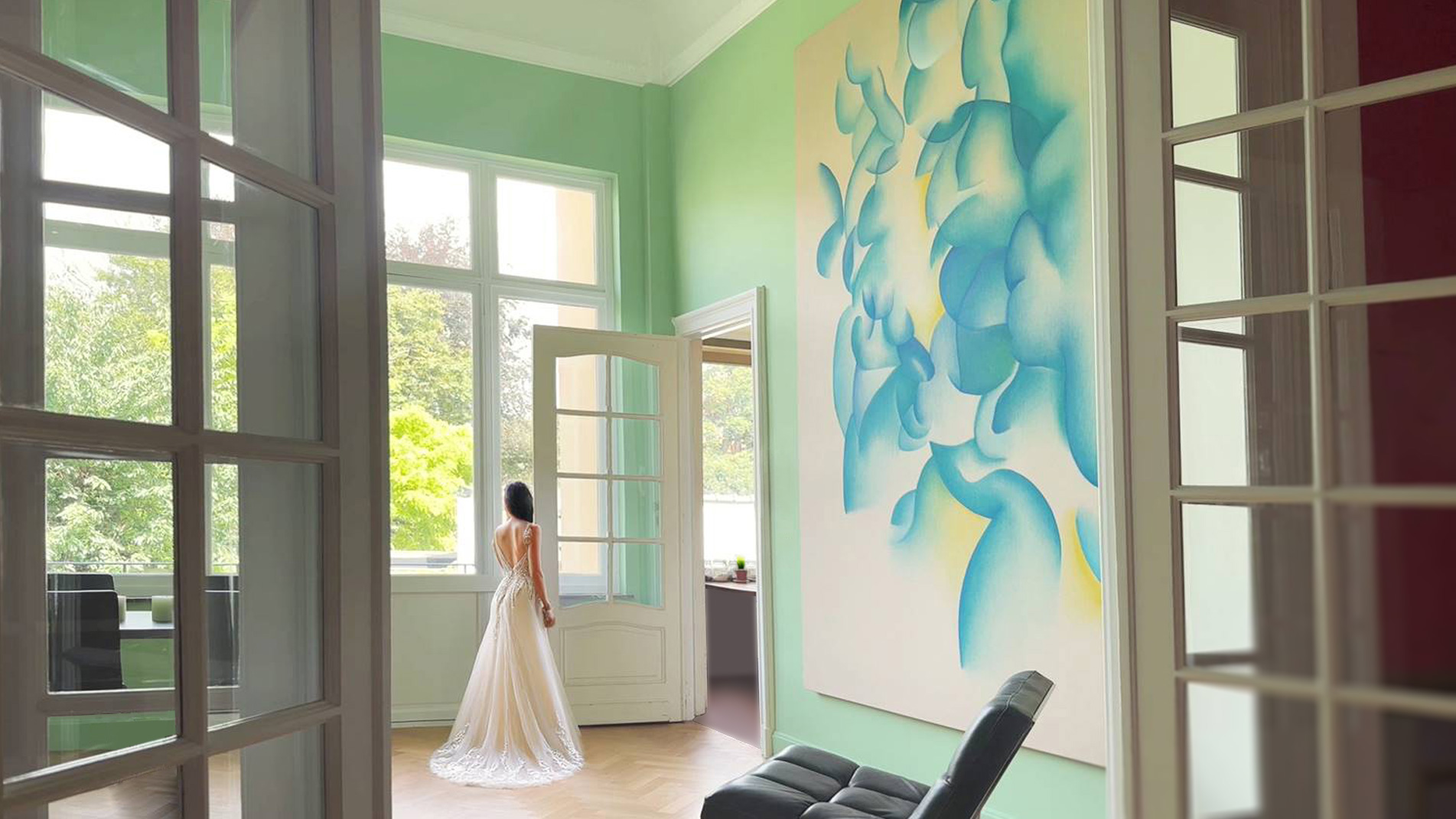
“Guillaume Bottazzi is the first to be convinced that certain works of art act like medicine, making us happier. He has been exploring the intimate links between neurology and art in our living spaces for more than a decade, focusing on our well-being.”
La Libre Belgique newspaper, April 2024
